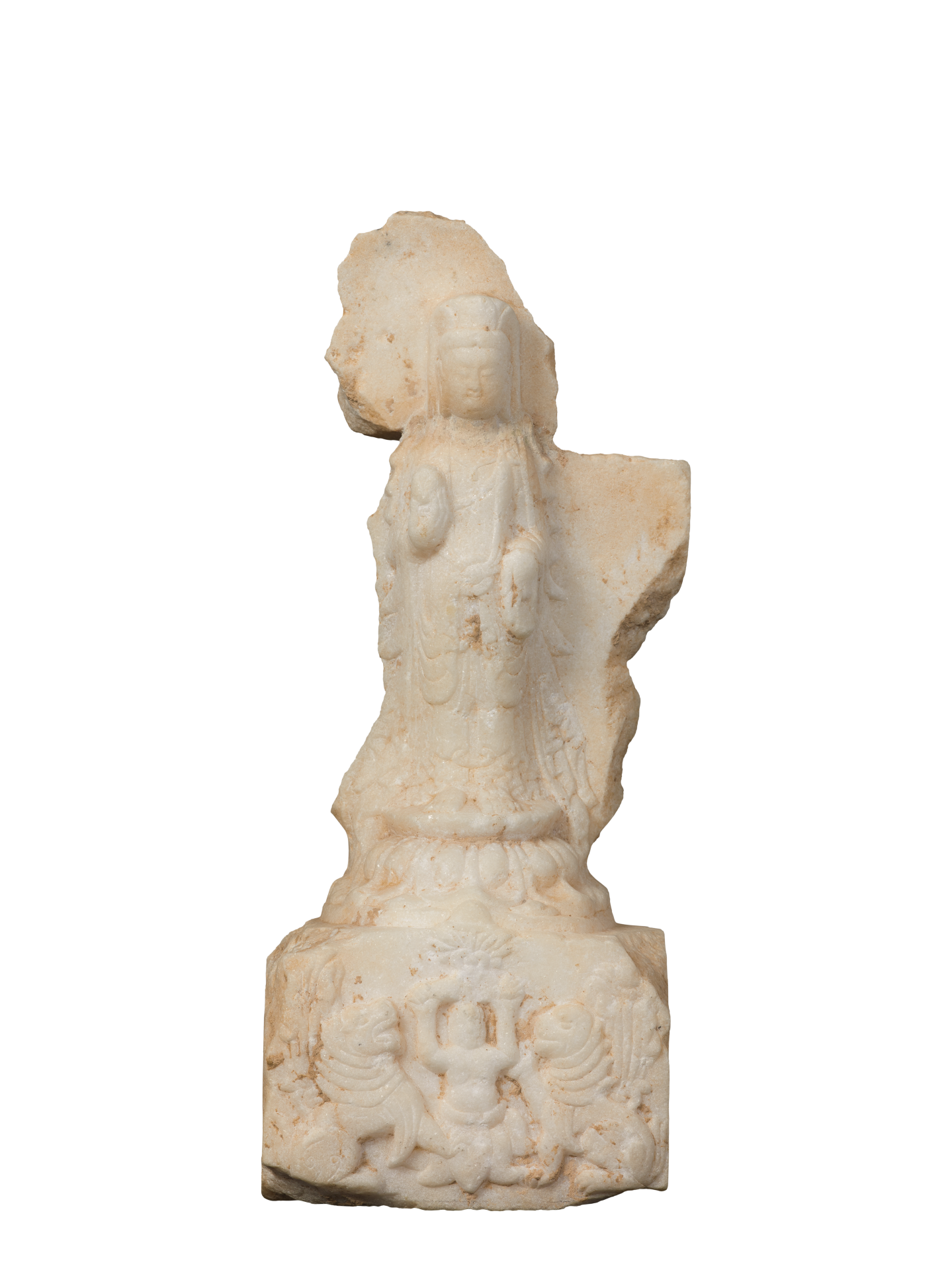Standing Guanyin Bodhisattva
Amongst all the white stone statuary produced during the Northern and Southern Dynasties (420-589 CE), those from Dingzhou in Hebei Province were the most famous. Since Dingzhou had a rich reserve of smooth, lustrous and fine-grained white marble known as ‘Han white jade’, large numbers of Buddhist statues were sculpted using this stone since the Northern Wei dynasty (386-534 CE). In 1953, over 2,000 pieces of white stone Buddhist statues were unearthed from the site of Xiude Monastery in Quyang, Hebei province. More than 400 of these statues were dated from the Northern Wei dynasty through the Tang dynasty (618-907 CE), establishing a distinct timeline for the development of Dingzhou white stone statuary. The Northern Qi dynasty (550-577 CE) saw the peak of this development characterised by a great variety of subjects and more sophisticated sculpting techniques.
This standing Guanyin statue wears a regal crown, a necklace over his chest, and a long shawl hanging down the shoulders anchored at the front of the belly forming a criss-cross. He holds a lotus blossom in his right hand and a peach-shaped object in the left hand. The Lotus-Born Boy and the flanking pair of playful lions carved in relief on the façade of the square base add a touch of liveliness to the work.
This white stone statue is quite similar in iconography and style to the Eastern Wei (534-550 CE) standing Guanyin in the Museum collection, but with a plumper face, parallel drapery folds with step-like profile, U-shaped catenary folds around the legs, a fuller body and better mastery of the muscular nuance of the hands, indicating a more sophisticated stylistic development of the white stone statuary during the Northern Qi dynasty.
